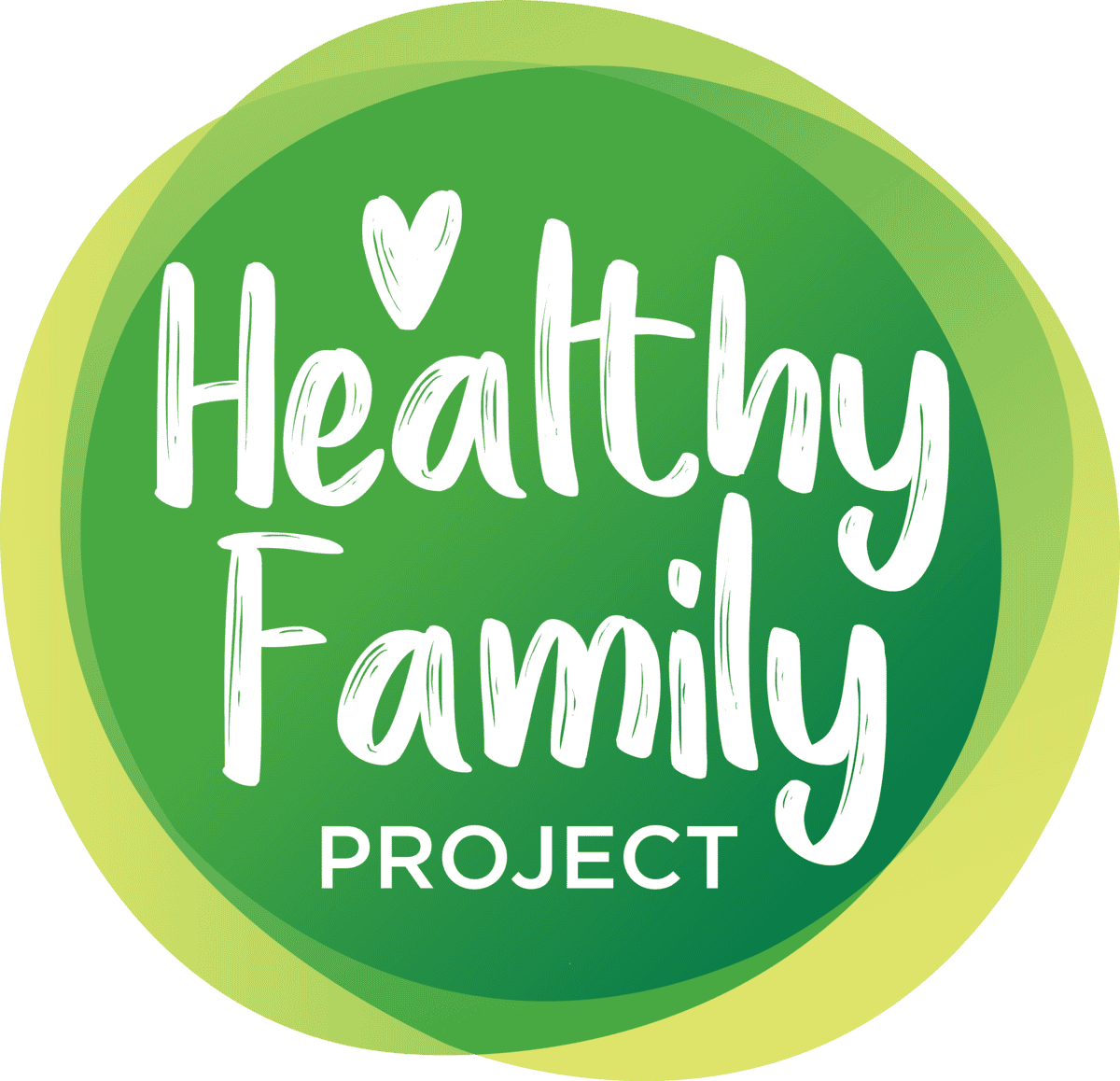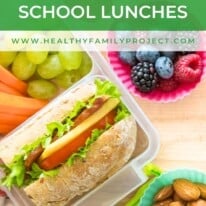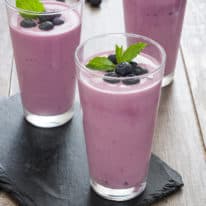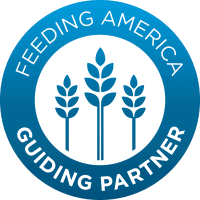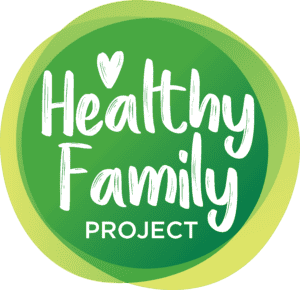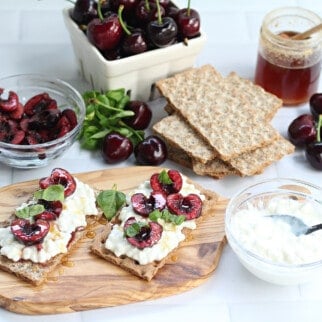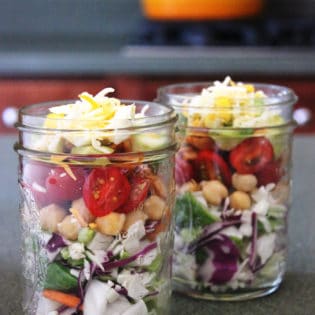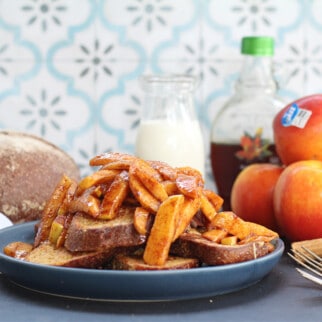Tips for Packing School Lunches
Wondering how much food to pack in your child’s lunch? Or how to make your child’s lunch healthy AND something they’ll eat? Check out these tips for packing school lunches that will fill your kids up and keep them that way through the day.
Packing a nutritionally-balanced school lunch that your child will enjoy may seem like a daunting task, especially when you are trying to prepare it before the bus arrives. Weekday mornings are hectic enough, let alone worrying about what and how much they should be eating during the school day to fuel those busy brains.
With the help of MyPlate, plus a list of your child’s favorite foods, you may find that packing school lunch is a lot easier than it seems.
The benefits a child gains from a healthy diet are numerous. Proper nutrition is vital to every aspect of development in a growing child. Vitamins, minerals, protein, carbohydrates, fats, and fiber all play a role in how a child’s body develops and functions.
Small children who are still in the developmental stages need adequate amounts of nutrients to ensure proper growth. Kids who eat healthy foods are more likely to reach developmental milestones at the appropriate age.
One of the most important benefits of a healthy diet is that good nutrition supports a healthy immune system. Adequate nutrients strengthen the body’s defenses against germs, bacteria, and viruses that cause colds and flu. And we all know that kids manage to find plenty of germs while they are at school! A strong immune system also helps the body to fight infection in case of an injury or open wound. Hello skinned knee from the playground!
Adequate amounts of calcium and vitamin D support stronger bones and teeth. Healthy bone growth provides a solid structure for exercise and athletics. Strong teeth are needed to chew food and break it down into components the body uses for fuel and nutrients. Being able to chew the food properly allows the digestive system to work more efficiently as well.
Vitamin B and amino acids are needed for proper brain function. Having the right nutrients allows for better concentration and can increase a child’s ability to focus and remain on task and have higher energy levels.
Teaching a child how to eat a proper diet from a young age builds healthy habits that extend into their adult years. The occasional snack or sugary food is not harmful unless it’s allowed to take the place of healthier foods on a regular basis.
This framework builds a diet regimen that can affect a child’s health and physical growth. It is also proven that a child’s mental state can be affected by the foods are eaten. Encouraging healthy eating is one of the best ways to ensure a bright future for your child.
Empower your kids in the kitchen!
One of the best ways to teach your child to eat healthy is to get them involved in the cooking process. Have your kids help pack school lunches. Kids are much more likely to eat what is in their lunchbox if they had a hand in packing it.

How do you #PowerYourLunchbox? Show us your healthy lunchboxes on Instagram using #PowerYourLunchbox.
Get all our Back To School Tips
Looking for more lunchbox solutions?
- Best Lunch Boxes For Kids
- 25+ Nut Free Lunchbox Ideas
- 34+ Non-Sandwich Lunchbox Ideas
- 10+ Ways To Add More Fruits & Veggies To Your Child’s Lunchbox
- Ultimate Guide For Packing Healthy Lunches
- 12+ Gluten-free Lunchbox Ideas
So, what makes a healthy school lunch? Let’s start with each food group!
Power Up with Protein
Protein food sources will help your child feel fuller for longer, which will hopefully help them make it the rest of the school day without needing an additional snack.
I like to try to include two portions of protein in my child’s lunch, mainly because a school lunch filled with carbohydrate-heavy options will leave them hungry an hour or two later.
While this might seem like a lot of protein, don’t forget dairy food favorites like yogurt, milk, and cheese count as protein too! This could also mean deli meat in a sandwich or other main course and another protein-rich snack such as a cheese stick, milk or hummus.
Here are some protein-rich foods that you can include in your child’s lunch:
- 1 oz of meat, poultry, seafood
- ¼ cup tofu
- ½ oz nuts (almonds, peanuts, trail mix)
- 1 granola bar
- 1 yogurt cup (6 oz)
- 6-8 oz milk
- 1 oz cheese
- ¼ cup beans or lentils
- 1 egg
- 1 tablespoon peanut butter
- 2 tablespoons hummus
- ½ cup roasted chickpeas
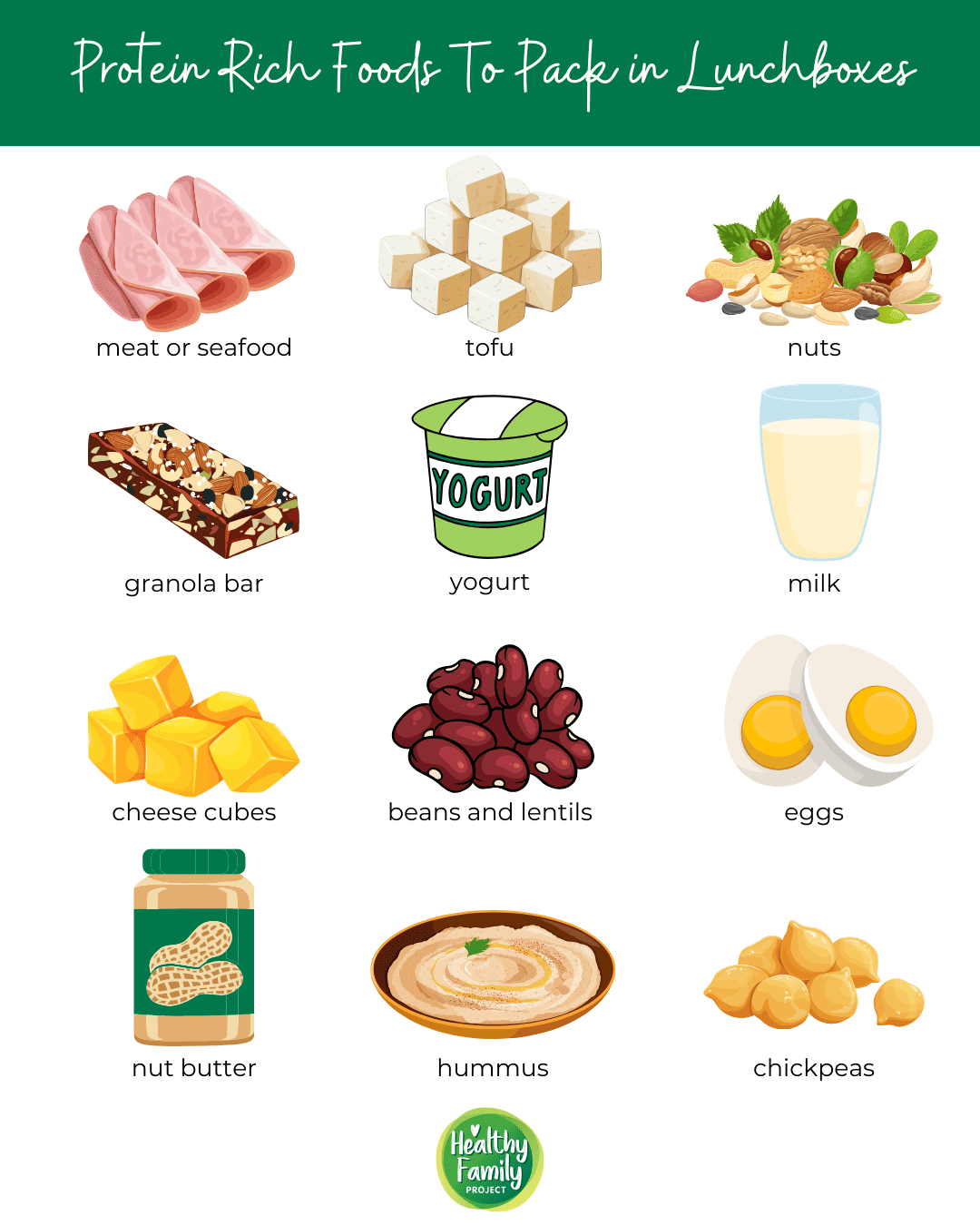
Choose Whole Grains
Next, you want to make sure your child has at least one serving of whole grains in their lunch. Whole grains are packed with vitamins and minerals, along with fiber, which will also help your child stay fuller longer, and therefore, is a better alternative to refined grains such as white bread.
It is recommended that everyone consumes 50% of their grain intake as whole grains, so check those nutrition facts labels to make sure whole grains are listed.
Here are some grains that you can include in your child’s lunch:
- 1 slice of whole wheat bread
- 1 whole wheat tortilla
- ½ whole wheat English muffin
- ½ cup brown rice
- ½ cup whole grain pasta (great for pasta salad)
- 1 small muffin
- 5 whole grain crackers
- 1 small or mini whole wheat bagel
- 3 cups popcorn (considered a whole grain!)
- 1 oz tortilla chips
- 1 cup whole grain cereal
- ½ whole wheat pita
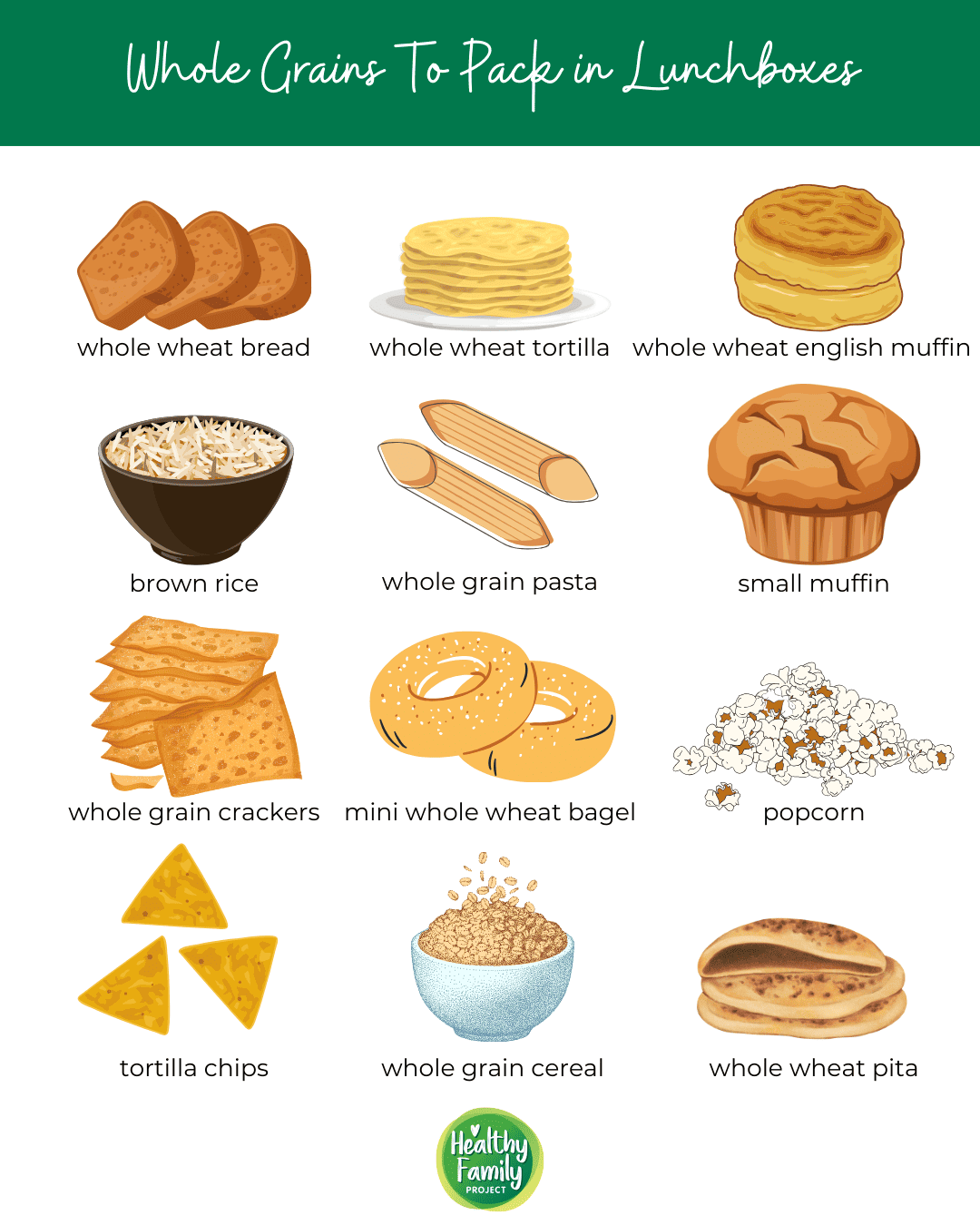
Fruits & Veggies
It is also important that your child’s lunch includes fruits and vegetables! Try to pack at least one serving of fruit and one serving of vegetables.
Vegetables can be included in a sandwich or pasta salad or on its own with a little bit of ranch or hummus to dip in, while fruits can be considered a dessert your child can eat at the end of their meal!
Here are some examples of a serving of fruits and vegetables:
- 1 small apple
- 1 medium banana
- ¼ cup dried fruit
- 1 cup grapes, berries or melon
- 1 mandarin
- 1 cup no-sugar-added applesauce
- 1 cup 100% fruit juice
- 1 cup lettuce or spinach
- 1 cup carrots, cucumbers, cherry tomatoes, sugar snap peas, celery or mini sweet peppers
- 1 fruit cup, packed in juice
- 1 small kiwi
- 2 Tbsp. guacamole
- 5 olives
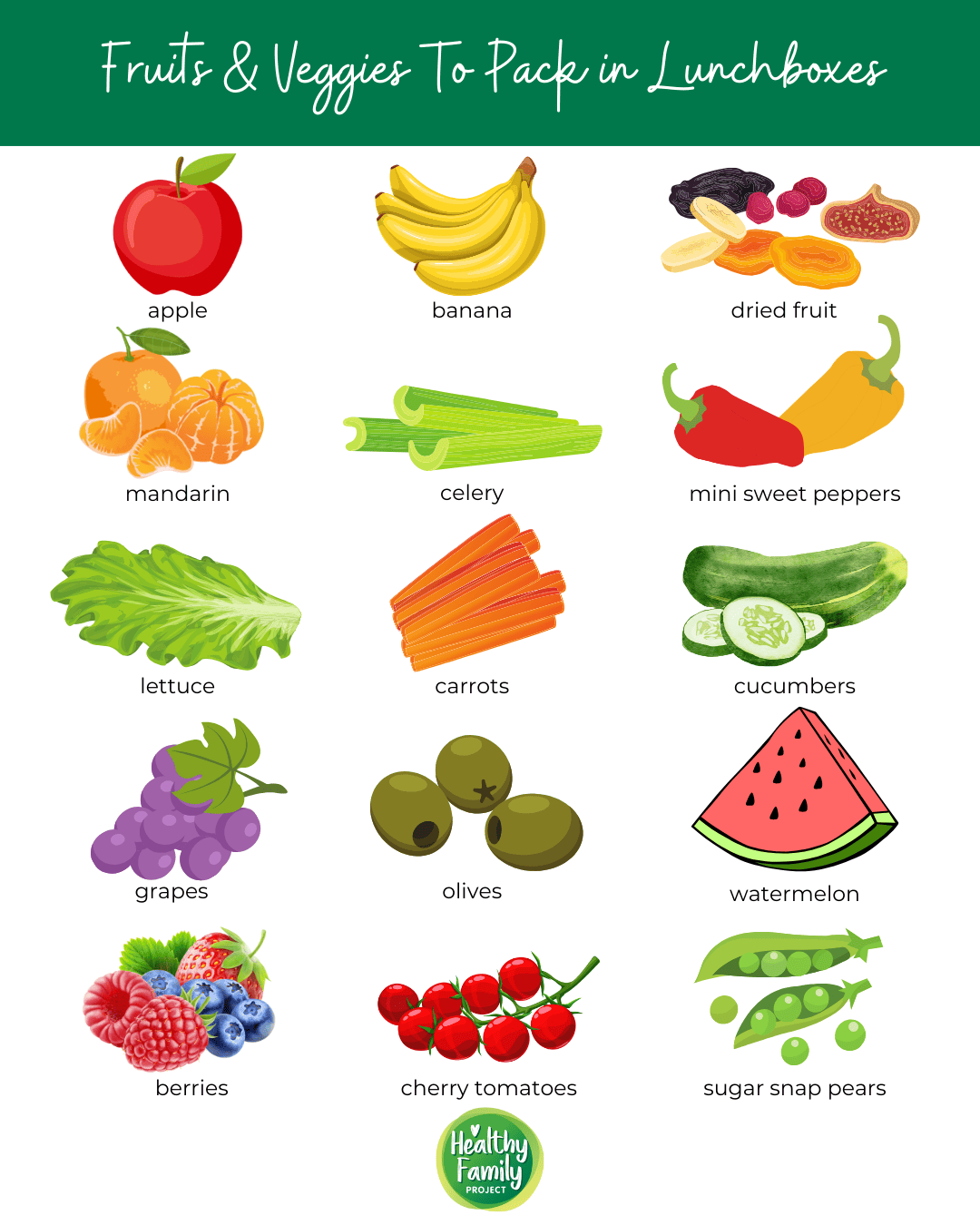
Although you want your child to eat all of their lunch that you are giving them based on the portions above, it is important to check that lunch bag when the day is over to see what and how much was eaten.
Ask your child if they are eating all of their lunch or it was too much or too little and adjust accordingly. There is no such thing as a “perfect lunch” for your child, so experiment and find what works.
Here are additional tips to help create a great lunch your child will eat:
- Keep it organized so that foods are separated by bags or containers and that it looks inviting for your child. Check out some of our favorite containers.
- Variety is key. Try not to serve your child the same lunch every day otherwise, they may get bored of it and not want to eat it, so try rotating meals. This Build Your Own Lunchbox guide will give you lots of options!
- Get your child involved! Ask your child what he or she wants in their lunch and include him or her in the preparation process.
- Teach your child how to prepare a healthy, balanced lunch. One day they will be taking over making their own lunch.
- Make their lunch fun! Try using foods of many colors in the lunch or cutting sandwiches, fruits, and veggies into fun shapes.
So now that you have some guidelines, preparing your child’s lunch should be a little bit easier. You can combine foods from each category to make sandwiches, salads, wraps, and other tasty creations.
Don’t forget to play around with a few of these options OR heck, stick to a few trusty favorites because if one healthy school lunch idea works, then that’s all it takes!
If you need some more ideas on prepping healthy lunchboxes, check out Episode 7 of the Healthy Family Project podcast for tips from meal planning expert, Brenda Thompson of Meal Planning Magic!
